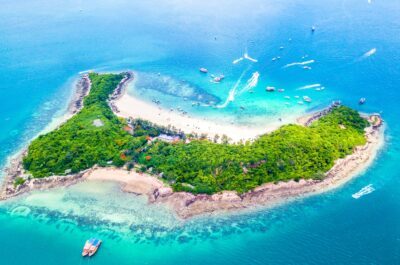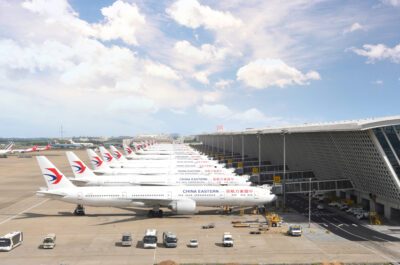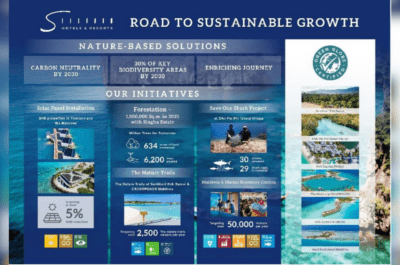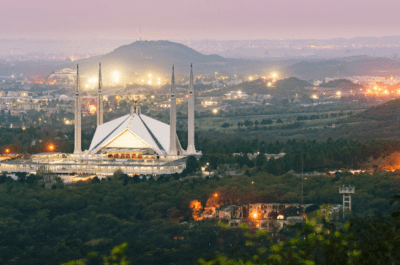…
Since the beginning of this decade tourism in Asia has been a victim of some disaster or the other. First came the indirect effects of September 11 2001, followed by severe acute respiratory syndrome (SARS) and the Bali bombing attacks in 2003 and now, the tsunami tragedy of December 26, which has dealt a huge blow to the affected countries in terms of the sheer volume of loss: human, marine and economic. Last month’s catastrophe has been almost mind-numbing. More than 160,000 persons have perished and nearly 5 million persons have been left homeless. The World Health Organization fears that another 50,000 further would perhaps die due to inadequate relief or diseases such as diarrhea or viral fever. It may be worthwhile to briefly review these events from the hospitality industry’s viewpoint, and determine how we should respond to the most recent crisis.
The adverse effects on tourism of ‘9-11’ were essentially a sharp downturn in outbound travel from the United States and, to some extent, from Europe. A global slump in general plagued the travel tourism industry. The Bali bombings had an impact on the island destination, but much of Asia remained normal. The impact of SARS was felt across Asia, as people cut down on everything but necessary travel to the region, and this had a severe economic impact on the travel trade industry. Till Christmas in 2004 it appeared that Asia was finally recovering nicely.
Initial thoughts on the tsunami impact are that it will be very different from SARS. Tourism in parts of southeast Asia will be devastated by the economic aftershocks of the earthquake-triggered tsunami, but the broader impact on the Asian or East African travel industry is not expected to be as severe as 2003’s deadly SARS outbreak. However, certain parts of Thailand, certain islands in the Maldives and Sri Lanka will face the brunt of disaster.
We, as part of the hospitality and tourism industry, are of the view that issuing global travel advisories against the ‘victim’ countries can actually do more damage than good. While it is important for each government to warn its country’s citizens of the dangers (epidemic outbreak, unsanitary conditions, etc) in tsunami-affected areas, there are other parts that remain safe. For example, why should Bali, left untouched in the recent tragedy, be issued a travel advisory just because of a general travel advisory against Indonesia? Similarly, why should there be a travel advisory against the whole of India when only one small region, and that too not an important tourist destination, suffers? Statistics indicate that approximately 42 million people in the tsunami-hit countries earn their livelihood from tourism, and restrictions on inbound travel could seriously hurt their incomes and their lives.
Already there has been a tremendous loss of life, which has been felt in not only these countries but by countries across the globe as their citizens traveled to these regions (on last count some 40 countries had lost at least one citizen). However, these travel advisories will cause further misery on the affected countries and their people, as it will economically ruin them further when they need the most help to revive and re-build. The United Nations and other global agencies have already said that some of these regions may take 10 years to re-build. The hospitality industry, on its part, must make the effort to identify the regions that have been affected and work closely with the concerned governments or local organizations to build these areas back to normal if not better and build the confidence level of the people who have lost all. Its actually the poorest of the poor who have been affected the most in each of these countries. And although no amount of international aid or outpouring of support can provide adequate relief to those directly affected, we need to at least start the process somewhere.
Governments, international organizations and relief workers are trying their best while ordinary citizens are trying to come to terms with the new state of affairs, and get back on their feet. Already, the Thai are making efforts to welcome back tourists, and among the relief operations are individuals providing international translations to stranded tourists. In Sri Lanka (an economy dependent to a large extent on tourism and fishing) many devastated families, dependent on fishing for their livelihood, are busy repairing their boats and heading out to sea, in an effort to catch fish for their next meal, rather than rely entirely on relief and aid.
The table below presents some statistics on the tourism economies of the tsunami-affected countries in Asia and Africa. Following this table we discuss briefly our outlook for tourism for some of these countries. The table below has been presented in order of loss of life in each of these countries.
| Countries | Tourism as % of GDP | % Population Employed in Tourism | Travel & Tourism Jobs (000) |
| Indonesia | 10.3% | 8.5% | 8,520 |
| Sri Lanka | 10.8% | 8.8% | 720 |
| India | 4.9% | 5.6% | 24,457 |
| Thailand | 12.2% | 8.9% | 3,051 |
| Maldives | 74.1% | 64.4% | 70 |
| Malaysia | 14.7% | 12.7% | 1,267 |
| Bangladesh | 3.7% | 3.0% | 2,239 |
| Burma | 3.3% | 3.0% | 629 |
| Tanzania | 8.8% | 6.9% | 603 |
| Kenya | 11.7% | 9.4% | 523 |
| Somalia | N/A | N/A | N/A |
Source: WTTC World Report – 2004
Indonesia: Was the nation closest to the earthquake’s epicenter and has been the worst affected. According to recent statistics, close to 100,000 people have died and many more are still missing. At least 300,000 people will get displaced. Areas known as Banda Aceh and Sumatra have constraints that are logistical bottlenecks according to international relief agencies. UN has warned that certain areas may take up to another week to get to tsunami survivors. Similar problems are also being faced in Sri Lanka, Maldives, and Andaman & Nicobar Islands (India). Helicopters have dropped aid to clamoring crowds in tsunami-hit Indonesian villages a week after the first wave came but are unable to even land after the waves wiped away towns. Fortunately, Aceh, the province that bore the brunt of tsunami damage in Indonesia, accounts for only 2% of the country’s economy. The tsunami apparently has not damaged the regions main money earner, oil and gas production facilities. However, the financial aid received will be required to help the poor in the region. Our outlook for tourism in Indonesia remains grim in the near future, but we expect this industry to bounce back as the main traditional tourist destinations were not affected.
Sri Lanka: The island nation of Sri Lanka has seen at least 30,000 people succumbing to the Tsunami waves and at least another 14,000 are still un-accounted for. A staggering one million people have been displaced from their homes. The Tamil rebels, who have been raging a secessionist battle with the government for nearly 20 years now, have seen the regions under their control been badly hit, and this is further compounding the problem to provide relief by the Sri Lankan government. Many of the main areas affected include the popular tourist spots, which have been badly damaged. The main problem facing the people along the affected coastline is getting food and clean drinking water. The country which has seen a lot of turmoil over the past two decades was just recovering from the declared truce between the Tamil rebels and the government, and hotels were just beginning to increase rates that had been lower than expected. Our outlook for tourism remains grim in the near and medium term future.
India: The southwestern tip of India along with the clusters of islands known as Andaman and Nicobar were affected by Tsunami and approximately 14,000 people are dead or missing. As the affected areas were in close proximity to Chennai, a major commercial destination, approximately 650,000 people have been displaced. The worst affected were the island clusters, which are very close to the epicenter in the Indian Ocean. This number could rise, as some of the rescue workers have not been able to reach the interiors of these islands. Indira Point, which was India’s southernmost tip and a 100-sq km island, has just disappeared into the ocean. The islands have been devastated and people are currently still being evacuated. Although there were some tourists and Andaman & Nicobar Islands were being positioned to become the next Maldives, these plans will now need to shelved, as there has been huge loss of coral and other marine life. Loss along India’s main coastline was concentrated on some regions and recovery and re-habilitation work is currently ongoing. Our tourism outlook for India remains strong as the main tourist destinations like Goa, Rajasthan continue to be fully booked. In fact we expect a reverse trend as the domestic market is expected to stay back and not visit tsunami-hit countries such as Thailand and Malaysia in the immediate future.
Thailand: From all indications Thailand seems to be working towards recovery despite having lost nearly 10,000 people (unofficial estimates), many of who were international tourists. The government is believed to be keeping the death toll low so that there is as little impact as possible on the tourism driven economy. Thailand is expected to lose US$260 million a month as a result of this disaster. Some of the worst affected areas were Phuket and Krabi, both very popular international tourist spots. Local authorities expect the affected regions to be back on their feet at the earliest. Although strange certain places barely a few meters from the affected regions, appear to be normal as they were. Thailand depends heavily on tourism and fortunately the other main tourist hotspots like Bangkok, Samui Island, Hua Hin and Cha-am, Chiang Mai, Pattaya remain completely booked. We expect the tourism outlook for Thailand to recover strongly in a relatively short period of time other than the areas directly affected.
Maldives: The death toll in Maldives is 82, with another 26 missing. The number of people displaced in the tiny nation of coral islands is placed at 12,720. Of the 199 inhabited islands in the archipelago, 14 islands have been completely evacuated, and many other islands do not have safe drinking water or, for that matter, electricity. Approximately 25 islands have communication problems. Of the country’s 87 luxury resort islands, only 19 have had to shut down for repairs. However, due to the publicity of the affected areas even those islands which have been left untouched are getting affected. A country that is very heavily dependent on tourism is being severely affected and we must do everything possible to help its people from an economic disaster. The outlook in the short term looks weak, but we expect the islands to recover by next season.
Malaysia: Approximately 70 people have been reportedly killed in the country. The main area affected was Kampung Kuala Muda. The areas affected do not cover any major tourist hotspots. The outlook for tourism in Malaysia is pessimistic in the short term but we expect things to recover in the medium to long term.
Myanmar – Bangladesh – Tanzania – Kenya and Somalia: None of these countries were affected the same way as the countries that were in close proximity. Although there has been loss of life and the people affected are extremely poor we need to ensure we provide as much economic aid as needed to get back to normal. From a tourism angle we do not see much impact on any of these countries.
Manav Thadani, Managing Director, HVS International-India, joined HVS International`s New York office as a Consultant and Valuation Analyst in 1995.
TravelDailyNews Asia-Pacific editorial team has an experience of over 35 years in B2B travel journalism as well as in tourism & hospitality marketing and communications.



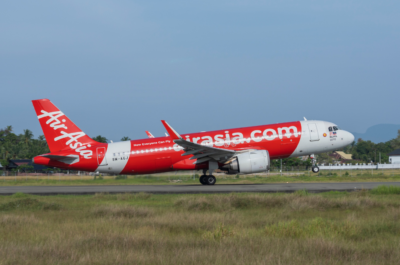


























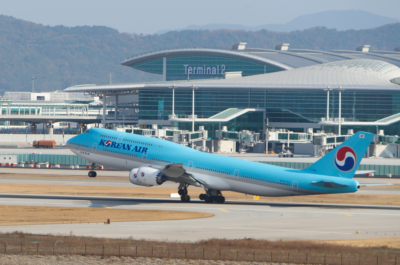









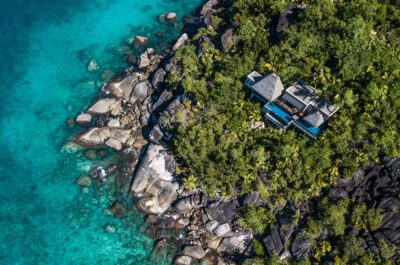





![[PR] PR_Ascott and Vimut Hospital_2024](https://www.traveldailynews.asia/wp-content/uploads/2024/04/PR-PR_Ascott-and-Vimut-Hospital_2024-400x265.jpg)

